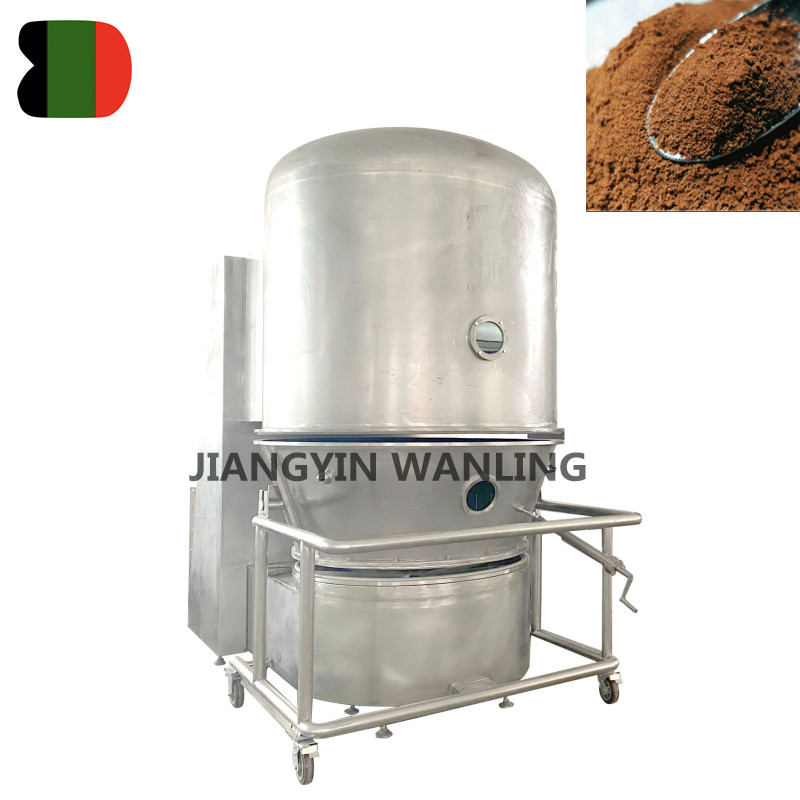Designing a fluidized bed dryer to optimize energy efficiency involves a careful balance of several key factors that affect the drying process, heat transfer, and material handling. The following are the key factors to consider:
Airflow Rate and Distribution
Optimizing airflow is crucial for efficient fluidization and heat transfer. The airflow rate must be tailored to the particle size and material properties. Too much airflow can cause high energy consumption, while too little can result in poor fluidization and uneven drying.
The distribution of air through the bed should be uniform to ensure consistent drying. This can be controlled by the choice of air distribution system, such as perforated plates, sintered plates, or nozzles.
Heat Source and Temperature Control
The temperature of the fluidizing air should be carefully controlled to balance drying efficiency with material thermal sensitivity. Higher temperatures speed up drying but may cause material degradation or loss of volatile compounds.
Energy-efficient heat exchangers or recuperators can be incorporated to recover waste heat from the exhaust air, reducing the need for external heating.
Particle Size and Shape
The particle size of the material affects the fluidization quality and drying rate. Larger particles require more airflow to maintain proper fluidization, while smaller particles can dry faster but might cause issues with uniformity.
Irregularly shaped particles may cause uneven fluidization, leading to inefficiency. Therefore, particle characteristics should be matched to the fluidizing conditions for optimal performance.
Moisture Content of the Material
The initial moisture content of the material affects the required energy input. Materials with high moisture content need more energy to achieve the desired dryness, so an effective pre-drying or moisture control strategy can help reduce energy consumption.
Moisture removal stages (e.g., preheating or pre-drying) can be designed to handle the material in stages to optimize energy usage.
Residence Time and Material Movement
The residence time of the particles in the fluidized bed should be optimized to ensure adequate drying without excessive energy consumption. Materials should not stay in the dryer for too long, as this increases energy use, but they must stay long enough to reach the desired moisture content.
Material movement within the bed also plays a significant role in energy efficiency. Ensuring smooth and controlled particle flow improves heat transfer and reduces energy wastage.

Energy Recovery and Heat Recycling
Heat recovery systems such as heat exchangers or air recirculation loops can significantly improve the energy efficiency of a fluidized bed dryer. The exhaust air can be recycled or preheated before entering the system, reducing the need for additional energy input.
In some cases, integrating an indirect heating system (e.g., using steam or electric heaters) instead of direct-fired air can enhance energy efficiency.
Pressure Drop Management
Pressure drop refers to the loss of pressure due to resistance to airflow, which can lead to higher energy consumption. Managing and optimizing the pressure drop is essential for reducing energy losses while maintaining adequate fluidization. This can be achieved by selecting appropriate fluidization velocities and bed height for the material.
Control Systems and Automation
Incorporating advanced control systems can help optimize the drying process. Automated systems can monitor parameters like air temperature, moisture content, and airflow, adjusting them in real-time for optimal energy use. These systems can also help minimize human error and ensure the drying process runs at peak efficiency.
Exhaust Air and Emissions Control
Efficient management of exhaust air and emissions can help reduce energy waste. For example, systems designed to capture and filter volatile organic compounds (VOCs) or particulate matter can prevent energy loss through unnecessary venting or filtering processes.
Material-Specific Properties
Finally, understanding the specific thermal properties of the material being dried (e.g., heat capacity, thermal conductivity, and moisture diffusion rate) is essential for designing an energy-efficient fluidized bed dryer. Materials with high heat sensitivity may require more careful control of temperature and airflow to prevent degradation while still drying efficiently.



 Español
Español














